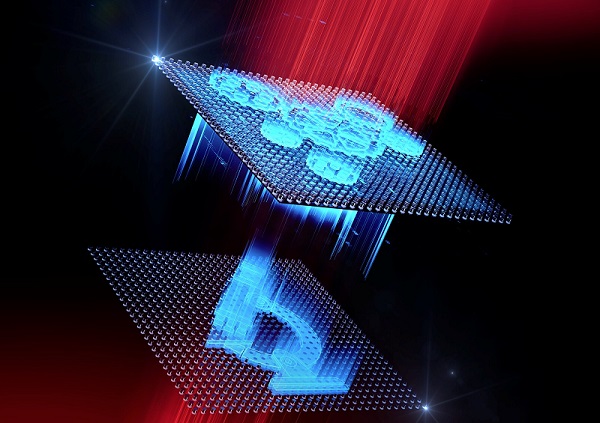CANBERRA, Australia, June 27, 2022 — Physicists at Australian National University (ANU) have developed translucent metasurfaces, described as slides, that produce two distinct images by manipulating the direction in which light travels through them. The newly introduced technology uses nanoparticles that control the flow of light like road signs control traffic on a busy road, by manipulating the direction in which light can or cannot travel, research project leader Sergey Kruk said.
The technology, which the physicists developed in collaboration with colleagues from China, Germany, and Singapore, uses nanoparticles arranged into unique patterns on the metasurfaces to control the directions in which light can and cannot travel at the nanoscale.
The development could pave the way for light-based devices that may in turn lead to a faster, cheaper, and more reliable internet, among other potential applications.
In a demonstration, as light passed through the metasurface, an image of Australia could be seen. Flipping the slide over revealed an image of the Sydney Opera House.

An illustration of the tiny slides developed by a research team led by physicists at ANU. The researchers advanced a technology that they said could pave the way for light-based devices that may in turn lead to a faster, cheaper, and more reliable internet. Courtesy of Ella Maru Studio.
Though the purpose of the images is mainly artistic, they demonstrate the technology’s potential, said Lei Wang, a researcher at Southeast University in China. “In real-world applications, these nanoparticles can be assembled into complex systems that would control the flow of light in a useful manner — such as in next-generation communications infrastructure.”
“When you make a video call, say, from Australia to Europe, your voice and image get converted into short pulses of light that travel thousands of kilometers through an optical fiber over the continents and oceans,” Kruk said. “Unfortunately, when we use current light-based technologies to exchange information, a lot of parasitic effects might occur. Light might get scattered or reflected, which compromises your communications.”
Kruk added that the advancement could take on a similar course as did diode and transistor technology.
“A wide deployment of tiny components that can control the flow of light could potentially bring technological and social changes similar to transformations brought about in the past by the development of tiny components that can control the flow of electricity, which are known as diodes and transistors,” he said.
The research was published in Nature Photonics (www.doi.org/10.1038/s41566-022-01018-7).